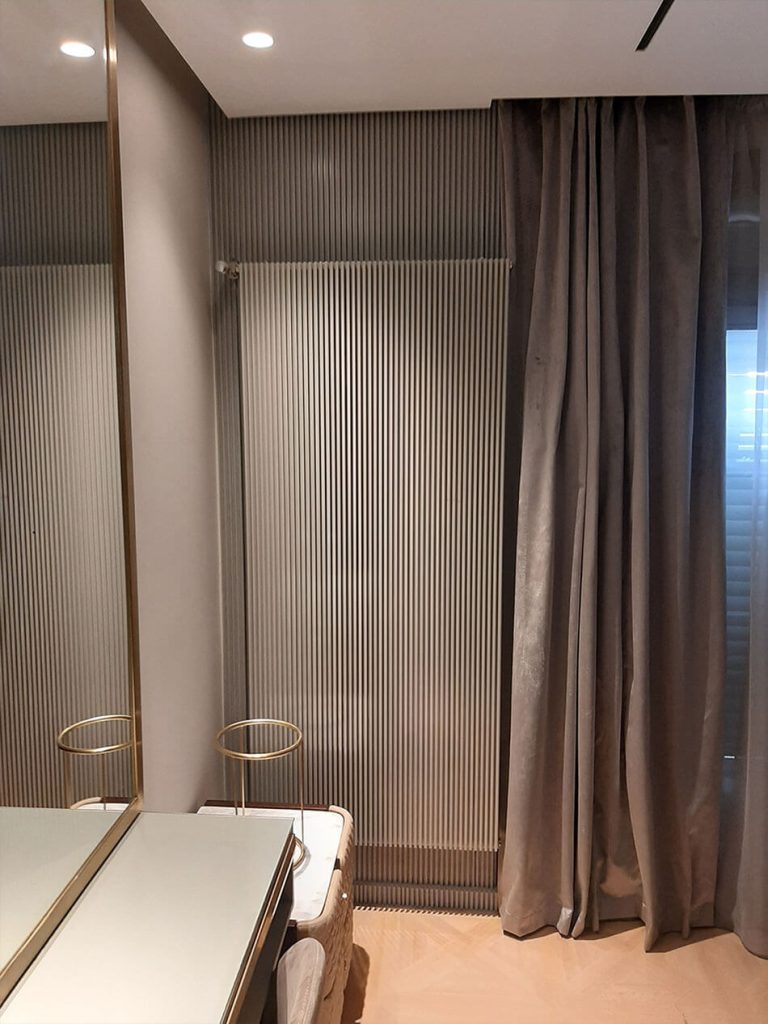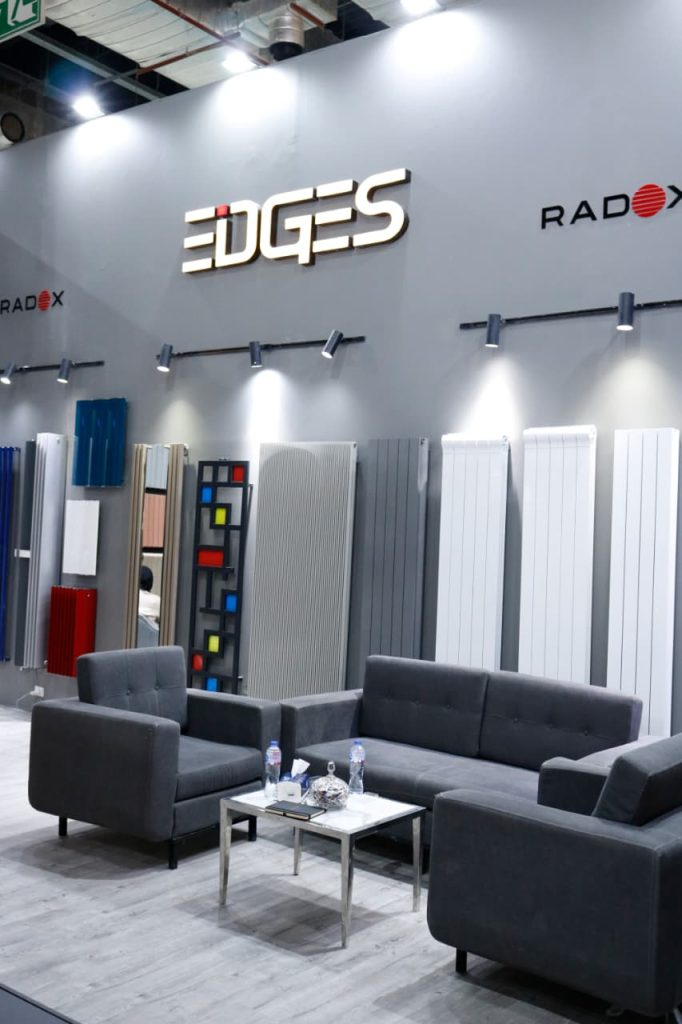Top-rated central heating services in Egypt with Edges Heating Systems. Fast response, certified technicians, and affordable pricing.
A heating system is essential for maintaining the ideal indoor temperature using thermal energy. As a key part of HVAC systems, it delivers warmth to homes, businesses, and industrial spaces.
Heating systems are divided into two types: central heating and distributed heating. Central heating produces heat from a single source and distributes it through ducts or radiators, while distributed heating, like electric radiators, operates independently.
Both options are vital for comfort, especially in colder climates. Investing in a reliable heating system enhances your environment, ensuring a warm and inviting space throughout the year. These systems are critical for ensuring indoor comfort, especially in colder regions.
A central heating system includes pipework and radiators connected to a boiler. The boiler heats water, and a pump circulates it through pipes to the radiators and back for reheating. It also supplies hot water to the hot taps in your home. There are typically two types of boilers.
- A conventional boiler consists of a pump, a programmer, and a room thermostat. This system allows you to control heating and hot water independently using the programmer. It heats water and stores it in a cylinder, typically located in the airing cupboard.
- In contrast, a combination (combi) boiler features a programmer and a thermostat but only controls the heating. This type of boiler heats water on demand, eliminating the need for a hot water storage cylinder.
Central heating controls. Depending on your system type, your central heating and hot water controls may differ.
Room thermostat
- The room thermostat is crucial for achieving a comfortable and energy-efficient home. Positioned strategically in areas like the hall, lounge, or dining room, it constantly monitors the temperature and controls the heating system effectively. When your desired temperature is reached, it signals the heating to pause, and when the temperature drops, it immediately instructs the system to circulate hot water again, ensuring your space remains warm and inviting.
- Set your thermostat confidently between 18°C and 21°C. Remember, lowering it by just 1°C can save you approximately £65 each year on energy bills. Take charge of your home’s comfort and finances by making smart thermostat adjustments. You’ll enjoy a pleasant atmosphere while significantly contributing to energy savings and being kinder to the environment.
Thermostatic Radiator Valves
Thermostatic radiator valves are installed on individual radiators to regulate room temperature by stopping water flow once the desired heat is reached. They are typically found on the side of the radiator, are white, and feature a dial with numbers from 1 to 5. Many people set the dial to 3, corresponding to about 20°C, to check if the room is warm enough. It’s best not to turn the valves fully ‘ON’ or ‘OFF’ to avoid wasting fuel.
Boiler thermostat
This component regulates the temperature of the water flowing through the radiators and should be set according to the manufacturer’s instructions found on the boiler. Combination boilers have two separate controls: one for heating the home and another for hot water. Make sure these settings are adjusted properly for optimal performance.
Cylinder thermostat
If you have a hot water cylinder, it is equipped with a thermostat that regulates the temperature of the hot water. This thermostat should be set to around 60°C (140°F).
Programmer
- The programmer is a control panel that schedules your heating and hot water. Depending on the type you have, you can choose to heat just the home, just the water, or both. Note that with a combi boiler, it will only control the heating.
- You can set it to activate once or twice a day, continuously, or turn it off completely. Most people set it to turn on twice daily, in the morning and evening, about 30 minutes before they need warmth.
There are 2 types of programmers:
- Digital/electronic: If you’ve installed a new boiler recently, you probably have a digital programmer for your central heating, typically found in the airing cupboard, hallway, or kitchen.
- Time clock: These programmers are equipped with a convenient clock that uses pins or arrows, allowing you to effortlessly set your heating schedule to fit your lifestyle.
To reset your programmer, check the user manual. If you don’t have it, you can find it online or call the Housing Repairs team for a copy.
How does a central heating system work?
The operation of a central heating system depends on the type of system, but they all share the same basic principle:
- Heat generation: The heat source, such as a boiler, produces heat through fuel combustion, such as natural gas, propane, or oil.
- Heat transfer: The heat generated by the boiler is transferred to a medium, such as air or water, which becomes hot.
- Heat distribution: The heated medium circulates through a distribution system, such as pipes, to heat coils or emitters located throughout the building.
- Heat transfer to ambient air: The heated coils or emitters transfer heat to the surrounding air or water via the distribution system. This process increases the overall temperature within the building.
- Control and monitoring: A control system regulates the operation of the boiler and blower to maintain the desired temperature in the building.
There are two most common types of central heating systems for a home: forced-air and hydronic. Let’s see how they differ and operate.
Forced-air systems
Forced-air heating systems heat air centrally and distribute it through ducts to rooms. While cost-effective, they often lack the energy efficiency and comfort of hydronic systems, which heat water and circulate it through pipes to radiators or underfloor heating. Hydronic systems provide more consistent warmth and can be a healthier option for allergy sufferers.
Efficiency and environmental impact
Heating system efficiency is measured by the Annual Fuel Utilization Efficiency (AFUE) rating, with higher ratings indicating better performance. Fossil fuel-burning systems raise environmental concerns due to significant greenhouse gas emissions. Central heating often relies on fossil fuels, especially in winter, with coal, natural gas, and oil contributing directly to emissions. This highlights the urgent need for sustainable and energy-efficient alternatives.
It’s important to note that these are general signs to consider. The most reliable way to determine if you need a new central heating system is to have it inspected by a qualified technician. They will evaluate the condition of your system and provide recommendations based on your specific needs and budget.
Fortunately, What Cost can simplify the process for you. Fill out our brief form in under a minute, and receive up to three quotes from reliable heating engineers in your area. Our quotes are free and non-binding. Just click below to get started.


